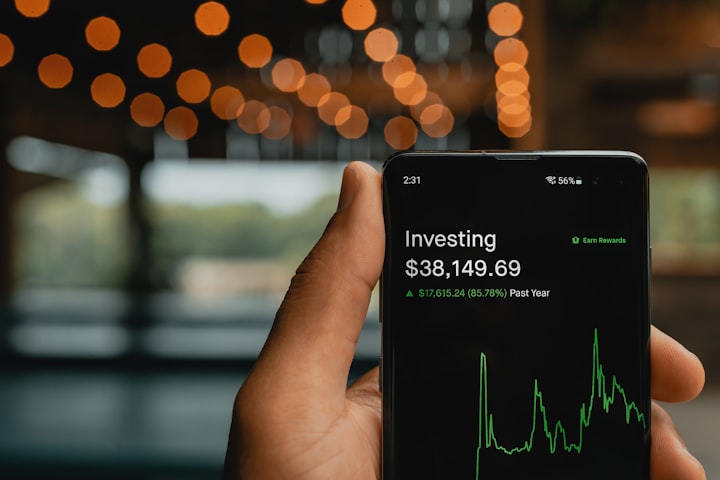By buying shares, you become the owner of part of the capital of the company that issued these shares. As a result, you have a number of rights, such as receiving dividends if the company makes sufficient profits or selling your shares to earn money. You can choose to invest by buying individual stocks or the shares of a mutual fund.
1. Examine how the stock market works.
This market runs like other markets. The products traded are shares in companies. In fact, these are shares that are listed on the stock exchange. You can think of this place as a market. In the United States, the main stock exchanges are the “New York Stock Exchange” (the New York Stock Exchange) and the “National Association of Securities Dealers Automated Quotation System (NASDAQ)”, which is also located in New York [howthemarketworks] .
The price of shares varies according to supply and demand. When a stock is in high demand, its price increases. This is normal since the number of buyers is greater than that of sellers. Otherwise, the price drops.
The price of a security reflects the idea that investors have on this security. This price does not necessarily correspond to the real value of the company. In other words, prices are often affected in the short term by subjective factors and not by facts. Prices may also fluctuate based on certain information, misinformation and rumours.
As a stock market investor, you are looking to buy the shares of a company that increases in value over time. If the issuing company expands its sales and increases its earnings, investors will be tempted to buy more of that company's shares. If the stock price goes up, you can sell yours at a profit.
For example, imagine you buy 100 shares at a unit price of $15. It is an investment of €1,500. After two years, the share price increases to €20. Now the value of your investment is €2,000. If you sell your shares, you will make a profit of €500, before commissions or other fees (€2,000 – €1,500).
2. Familiarize yourself with stock trading terms.
These terms will help you make the appropriate decisions about the buy or sell orders you give to your broker. They will also allow you to add certain conditions to your orders to buy or sell shares [ How Your Buy and Sell Orders Get Filled ] .
The ask price, also referred to as the bid, is the lowest price of the individual shares offered for sale. Suppose you want to buy common stock of the company “IBM”. If the ask price is €50 per share, you will pay that price to buy one share.
The bid price is the highest price you can get when you try to sell a stock. If you own shares of common stock in “IBM” and want to sell them immediately, you will get the bid price for the stock. If it is worth €49.75, you will receive this amount per share sold.
A market order is a request to buy or sell a security immediately at the best price available in the market. If you are a buyer and place a market order, you will pay the ask price. If you are a seller, the price you obtain will be the best bid price at the time of the transaction. Remember that your order may be executed at a higher or lower price than you expected. Generally, a market order is executable immediately, but without any guarantee as to the price of the transaction.
You also have the option of setting conditions regarding your purchase or sale price. In this situation, you place a limit order, that is, you specify a price to buy a stock or a price to sell it. Of course, you will accept a favorable price in both cases. There is also the stop order, which becomes a market order once the price of a stock reaches a certain value. Talk to a broker licensed to trade in securities and ask if there are other options that might work for you.
RELATED : DON’T TRY TO COPY THE RICH IN THESE 7 HABITS
3. Buy securities of a mutual fund.
A mutual fund pools capital provided by many investors. This capital can be invested in different ways. You can choose an investment fund that invests in the acquisition of shares issued by different companies. When you invest in a mutual fund, you get a share in every investment the fund makes. This formula may present less risk than the purchase of individual shares [ Investing Basics].
Investing in a mutual fund can lower your risk due to diversification. If you invest in a specific stock, you will depend on a single company. In contrast, a mutual fund may hold dozens or even hundreds of stocks from various sources. If the price of a stock falls, there will be minimal effect on the total value of your investment.
If you are new to this activity, this formula gives you the opportunity to invest in the stock market in a prudent way. Choose an investment fund if you are hesitant to buy individual stocks or if you don't have enough time to create and manage your portfolio yourself.
Pay attention to mutual fund fees. Indeed, you will have to pay fees to cover the salaries of the professionals who manage the fund. For example, you will likely be required to pay a sales commission when you trade your securities. Investors in a fund must also pay an annual fee for the management and operation of the fund. These annual fees are calculated on the basis of a percentage of assets under management.
For example, suppose you invested $10,000 by buying stakes in a mutual fund. If the annual fee is half a hundredth of the asset, you will pay €50.
4. Familiarize yourself with investment research.
It is important to do your research beforehand in case you decide to buy individual stocks instead of securities of a mutual fund. A great deal of information is available on the Internet. Therefore, you will likely have difficulty finding useful data. However, you will have a few tools to perform an analysis and choose an action [Why Would Someone Choose a Mutual Fund Over a Stock?].
Generally, information about shares is available on the issuing company's website or in its annual report. These sources can provide valuable insight into the company's business model and financial results. Also, companies frequently prepare information for investors in the form of easy-to-understand brochures. Review these documents before making your decision to invest.
Sites like "Morningstar.com" are also helpful. Beginners may find annual or quarterly reports overwhelming. By searching on "Morningstar", you can access essential information about a particular company, such as the balance sheet, income statement and cash flow statement. This site also provides important financial ratios, which facilitate the analysis of the company. On the other hand, the content of this site is easy to consult and review.
Do a search on "Google" to find out about the chosen company. Pay particular attention to the most recent articles, which reveal the company's performance in the market. Remember that an unbiased source should refrain from spreading distorted information.
5. Research the businesses that interest you.
The first step is to find an interesting company. To do this, consult specialized sites or read financial publications, such as “Wall Street Journal” or “Investor's Business Daily”. Similarly, by consulting sites like "Stockchase.com", you can get ideas about the stocks that analysts place at the top of the ranking [ Step-by-Step Guide to Researching Companies ] .
Start by investing in blue chip stocks. These are shares issued by large corporations with a prestigious track record of making profits. These companies usually have famous corporate names. They offer products and services that consumers appreciate and buy. The stock prices of these companies have a steady long-term upward trend.
However, even such an investment has certain risks. But, the stock price of these companies is often less volatile than that of other companies. Blue chip companies tend to capture a large share of the market. They are well funded and can enjoy competitive advantages.
Blue chip companies include "WalMart", "Google", "Apple" and "McDonald's". Also think about the companies you go to to buy your products and services.
6. Choose a successful company.
Once you have found the right company, you should review its main financial indicators. Compare these indicators to those of competing companies. Be aware that certain indicators are frequently used to evaluate a company's investment.
Examine the company's profit margin. This margin corresponds to the following ratio: (net income) / (sales proceeds). For the purposes of this analysis, net income and profit mean the same thing. This indicator makes it possible to determine the profit generated by the company for each euro sold. A business is always interested in as high a profit margin as possible. For example, if a company earns 10 cents on every euro sold, the profit margin would be (€0.10) / (€1), or 10%.
Analyze the company's return on equity. This capital corresponds to the total of the euros invested by all the shareholders of the company. Return on equity reveals how a company uses its shareholders' money to generate profit. The ratio corresponds to the following expression: (profit) / (equity). If a company has made €100,000 in profits with equity of €2,000,000, the return on this capital will be (€100,000)/(€2,000,000), or 5%.
Look at the company's growth in previous years and the expected growth for the future. Are the dividends paid by the company steadily increasing? If so, it is a sign of high activity that is likely to create a competitive advantage.
Study how the company's earnings growth rate compares to that of its competitors. Also look at projected profit growth rates for the next five years. If it is higher than that of competitors, it means that the company's share price is likely to rise.
Examine the company's debt. A well-managed company's debt should not exceed the amount it can repay. A common way to analyze this debt is to look at the debt ratio.
The debt ratio is calculated by dividing the company's debt by the shareholders' equity. The lower the percentage, the better. If a company's debt is €2,000,000 and its equity is €4,000,000, the debt ratio will be: (€2,000,000)/(€4,000,000, i.e. 50 %). Compare this rate to that of competing companies.
RELATED : THE 21 IRREFUTABLE LAWS OF LEADERSHIP YOU SHOULD KNOW
7. Familiarize yourself with the concept of value.
Think of a stock portfolio as a profit-generating machine. If the machine is working well and continues to create more and more wealth, investors will view it as their most valuable asset. Thus, the most important financial rates that reflect the value of a stock relate to earnings [Cost Accounting For Dummies Cheat Sheet] .
The best way to evaluate a stock is to look at the price/earnings (P/E) ratio. This ratio is calculated by dividing the current price of a share of the company by the dividends it generates. It is an essential tool for assessing the value of an investment.
The dividend of a share is determined by dividing the total profits in euros by the number of shares held by the shareholders, ie the shares in circulation. Suppose a company makes a profit of $1 million per year by having 10,000,000 shares outstanding. In this case, the dividend for one share is (€1,000,000) / (10,000,000 shares), or 10 cents per share.
Imagine that shares of a company are trading at $50 per share. If the earnings per share is $5, the stock's P/E ratio is ($50/$5), or 10. If an investor buys this stock, they will pay 10 times the earnings.
If Company A's stock is trading at ten times earnings or a P/E of 10 and Company B's stock is trading at a P/E of 8, Company A's stock is more expensive. Note that the term more expensive has nothing to do with the stock price. However, the ratio reflects how expensive a stock is relative to the earnings it generates.
8. Buy your shares directly from the issuing company.
Some companies offer this service, which allows you to buy stocks without going through a broker. If you plan to buy only a few shares, this formula could suit you. Doing so will save you time and brokerage fees [How to Invest Using Direct Stock Purchase Plans] .
Do a search online or call the issuing company you are interested in. Find out if it offers a stock purchase plan. If so, the company will send you a prospectus regarding its plan, forms and other relevant information. A prospectus is a regulatory document that gives all the information you need to know to buy shares.
Several schemes allow you to invest small amounts, around €50 per month. Check all the fees you will have to pay. A few companies offer investment plans at no cost.
Such a plan also allows you to reinvest all of your dividends automatically, if you wish. Dividends will be paid to you based on the profits made by the company. The board of directors of the company must fix the amount of these dividends, so that a payment can take place.
9. Choose a broker, If...
If you cannot buy your shares directly from the issuing company, all you have to do is contact a broker. Choosing a brokerage depends on the services it provides. In fact, you will need to set your criteria and choose the broker that fits your needs. Generally, there are two types of brokers: full service brokers and discount brokers [ How to Buy a Mutual Fund ] .
Full-service brokerages cost more. They offer their services to investors who wish to have recommendations and advice. The high cost may be justified, as a full service broker often provides valuable assistance. If you are not sure about making the correct choices or if you do not have time, it is better to contact a broker of this category.
If you are going to make your own investment decisions, choose a discount broker. There's no point in paying higher fees for services you won't use. Still, you will need to carefully review the broker's platform and ensure that its offerings match your investment goals.
Do an online search to find a discount broker. Analyze the fees charged, including any additional fees, which may be overlooked during the first contact. To avoid a bad surprise, ask for a written document that mentions all the necessary costs.
10. Open a brokerage account and deposit funds.
Contact a broker directly to open an account. Your broker will ask you to fill out a form, in which you will provide your personal information, as well as your investment objectives and your willingness to take on the risk that comes with investing in the stock market [ What to Expect When You Open a Brokerage Account ].
Your broker must report your stock market transactions to the tax authorities. Specifically, proceeds from the sale of shares and dividends will be reported to this administration. You will need to complete the required forms and return them to the broker.
Familiarize yourself with how to deposit funds into your brokerage account. Send your broker a sum of money that will be used to make your first stock purchase.
Place a buy order. Inform your broker of the nature and number of shares you wish to acquire. When your transaction is complete, you will receive a confirmation. This confirmation represents proof of your purchase. Keep all your purchase confirmations in your archives.
RELATED : 12 PRINCIPLES FOR A LIFE BEYOND THE ORDER
Finally, Respect the basic rules of the investor
Never put "all your eggs in one basket". Investing in shares presents risks, since the capital and interest are not guaranteed. In extreme cases, it is possible to lose your entire bet. This risk can be smoothed out by diversifying investment vehicles and sectors (subscribe to shares in several companies, from different sectors, use mutual funds, etc.)
Only invest in what you understand. Complicated financial products are often those with the highest risk
Always be skeptical when promised returns are high. The higher the return, the higher the risk. Moreover, the investment not being guaranteed, it is impossible to promise you with certainty a high gain without a complicated assembly hiding behind.
Always calculate the investment costs (entry, management, exit): the best returns can be weighed down by excessively high fees
Anticipate the exit before investing: the best investment is the one for which we know how we will be able to resell the securities. If listed shares may seem easy to resell on the financial markets, securities that do not have a secondary market can be difficult, even impossible to resell (unlisted, crowdfunding, etc.).







Comments
There are no comments for this story
Be the first to respond and start the conversation.